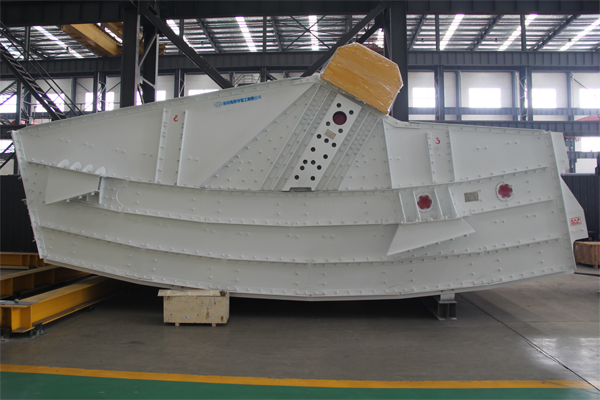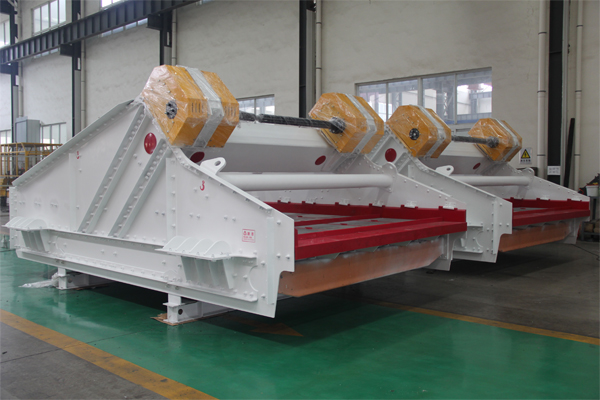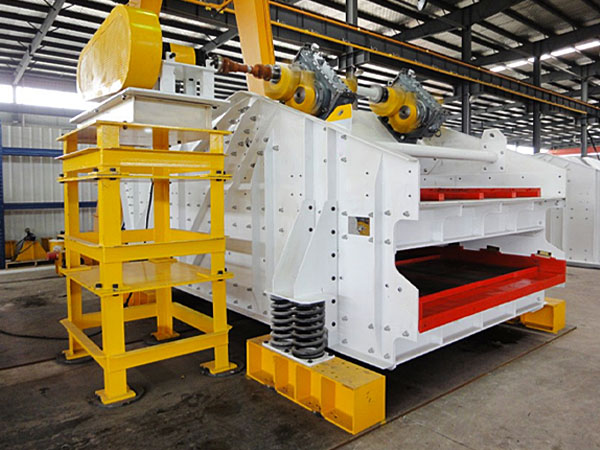How to improve horizontal linear vibrating screen screening capacity?
Improving the screening capacity of a horizontal linear vibrating screen involves a multifaceted approach, addressing various aspects of the machine and its operation. Here’s a breakdown of key areas to focus on.
Improve horizontal linear vibrating screen screening capacity

1. Screening Parameters
Frequency and Amplitude:
Increase Frequency: Higher frequency generally leads to better stratification and faster particle movement, thus increasing capacity. However, it can also increase screen wear. Experiment to find the optimal balance.
Adjust Amplitude: Increasing amplitude can improve throughput but may also cause material to bounce excessively, reducing screening efficiency. Fine-tuning is crucial based on the material characteristics.
Consider Variable Speed Drives (VSD): Allow you to adjust both frequency and amplitude on the fly to optimize for different materials or conditions.
Screen Deck Angle:
Typical Angle: Horizontal screens often have a very slight incline (1-5 degrees) to assist material flow.
Fine-tuning: Experiment with small angle adjustments to optimize material transport speed and prevent overloading at the feed end.
Stroke Direction and Angle:
Linear Motion: Horizontal screens use linear motion, typically angled 45 degrees to the flow direction.
Adjust Angle: Slight variations in the stroke angle can influence material stratification and throughput. Experiment to find the best angle for your specific material.
2. Screen Media:
Mesh Size and Type:
Proper Selection: Choose the appropriate mesh size based on your desired separation.
Optimize for Material: Consider the shape and size distribution of the material being screened. Different mesh types (e.g., woven wire, polyurethane, rubber) have varying open areas and wear characteristics, which impact capacity.
Consider Self-Cleaning Designs: Anti-blinding mesh designs, like piano wire or slotted screens, can prevent screen blockage and maintain capacity.
Screen Tension:
Proper Tension: Ensure screens are properly tensioned. Loose screens will vibrate improperly, leading to decreased efficiency and capacity.
Regular Checks: Regularly check and maintain screen tension as it can change over time.
Screen Deck Area:
Larger Surface: A larger screen deck naturally offers higher capacity.
Evaluate Existing Deck: If space allows, consider upgrading to a larger screen deck.
3. Material Feeding and Distribution:

Even Feed Distribution:
Controlled Feed: Ensure material is fed evenly across the entire width of the screen to prevent overloading in certain areas.
Feeders: Use appropriate feeders (e.g., vibratory feeders, belt conveyors) to control the feed rate.
Distributors: Implement devices like spreaders or diverters to distribute the feed evenly.
Feed Rate Control:
Optimized Feed Rate: Overfeeding or underfeeding can reduce capacity. Experiment to find the optimal feed rate for your material and screen setup.
Monitoring: Monitor the material bed depth on the screen. Too deep can hinder screening, while too shallow might not allow for efficient separation.
Material Preparation:
Pre-screening: Removing oversized material before it reaches the main screen can improve throughput and reduce wear.
De-agglomeration: If material clumps together, consider using de-agglomeration techniques (e.g., tumbling, air cannons) before screening.
4. Screen Machine Maintenance and Condition:
Regular Inspections: Regularly inspect all components, including bearings, springs, and screen frames, for wear and damage.
Lubrication: Ensure proper lubrication of all moving parts to reduce friction and ensure optimal performance.
Screen Frame Integrity: Ensure the screen frame is structurally sound and free from cracks or warping.
Proper Installation: Ensure the screen is properly installed and leveled on a stable foundation to minimize vibrations and ensure consistent performance.
5. Environmental Factors:
Temperature: Extreme temperatures can affect material properties and screen performance.
Moisture Content: High moisture content in the feed material can cause blinding and reduce capacity.
Dust Control: Implement dust suppression measures to prevent dust buildup, which can affect screen performance.
Key Steps for Improvement:

Analyze Your Current Performance: Understand your current screening capacity and bottlenecks.
Identify the Limiting Factors: Pinpoint the specific areas that are hindering capacity.
Experiment with Adjustments: Systematically test different parameters and solutions.
Monitor and Track Results: Collect data to determine the effectiveness of each change.
Implement Optimal Settings: Once the best settings are identified, implement them consistently.
Important Considerations:
Material Characteristics: The properties of the material being screened (e.g., size distribution, shape, moisture content) significantly affect screening capacity.
Cost-Benefit Analysis: Consider the costs associated with upgrades and adjustments compared to the potential benefits.
Safety: Ensure all modifications and adjustments are performed safely and in accordance with manufacturer guidelines.
By systematically addressing these areas, you can significantly improve the screening capacity of your horizontal linear vibrating screen, leading to increased productivity and efficiency. Remember that optimizing a screen is often an iterative process involving experimentation and data analysis.



